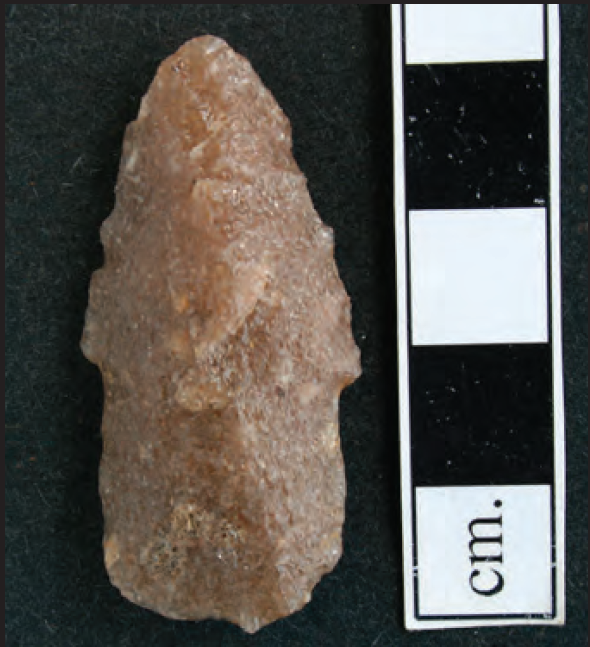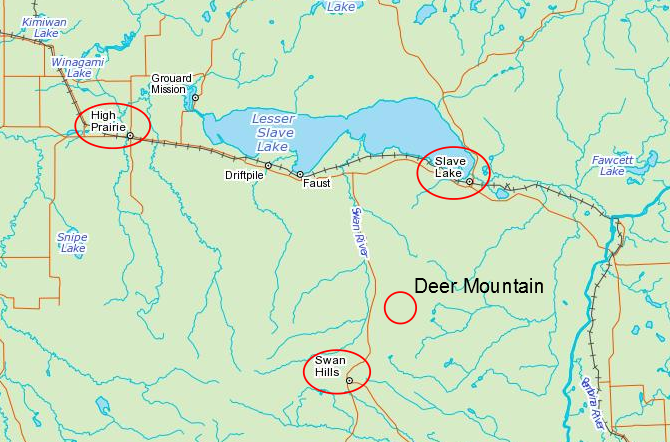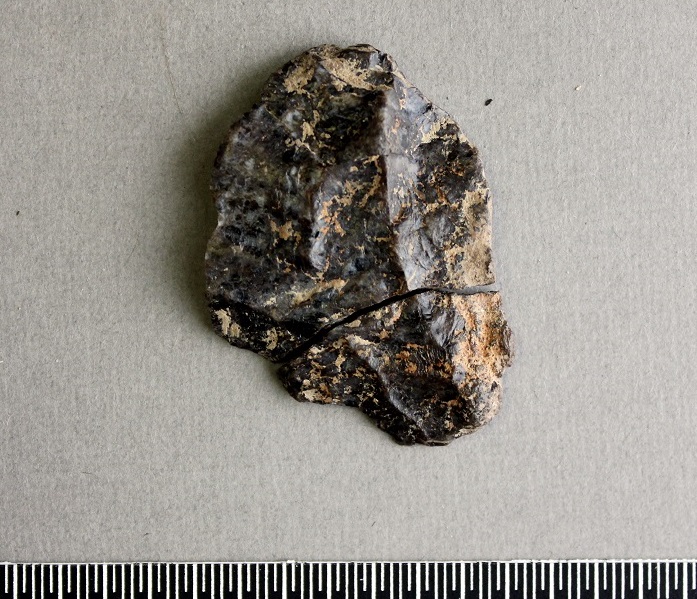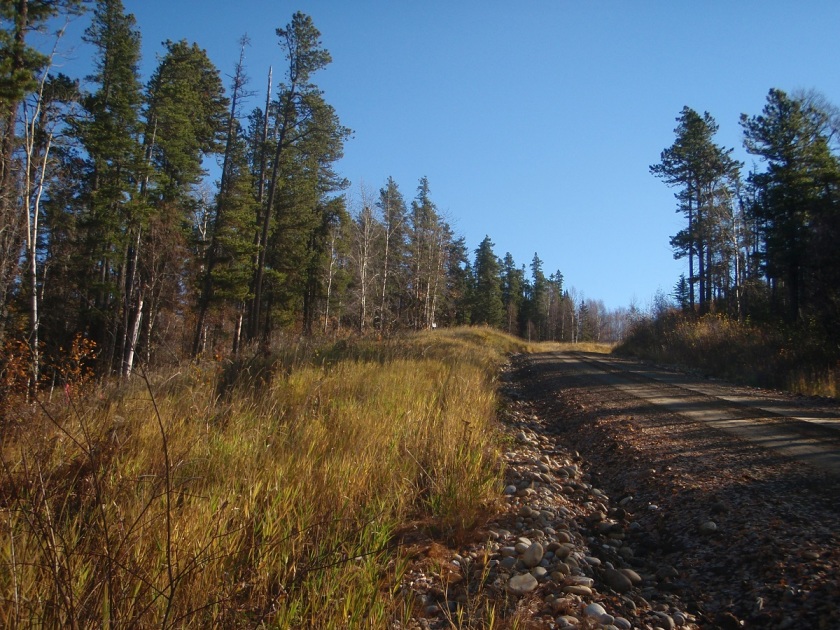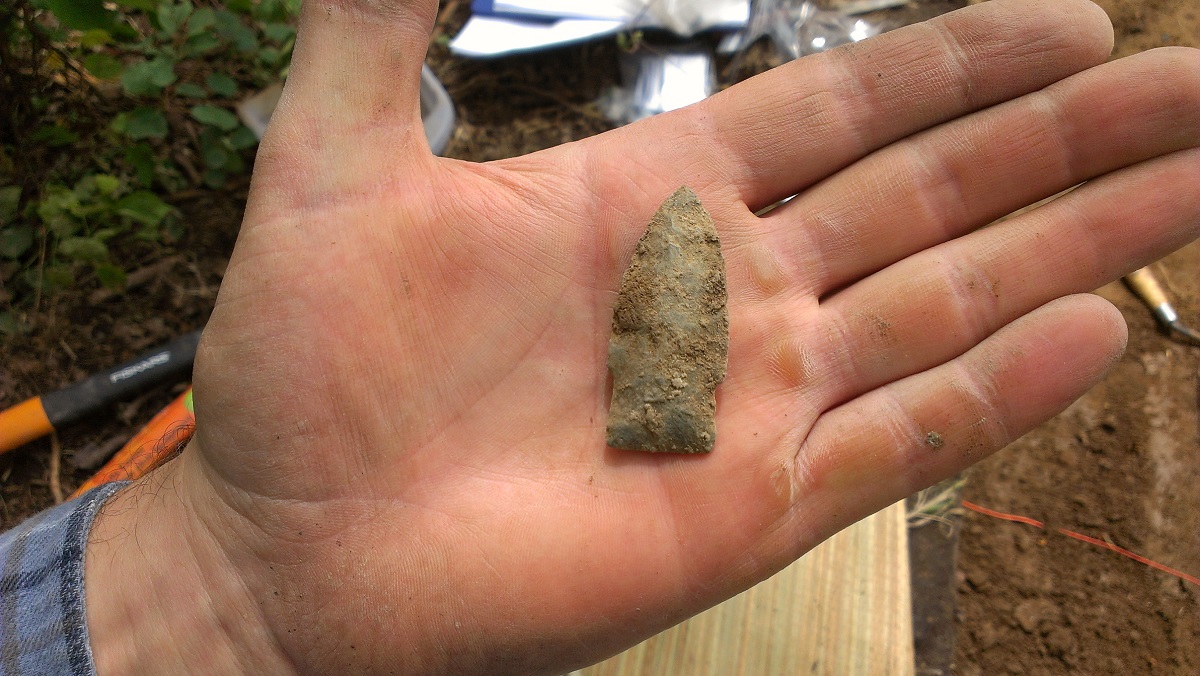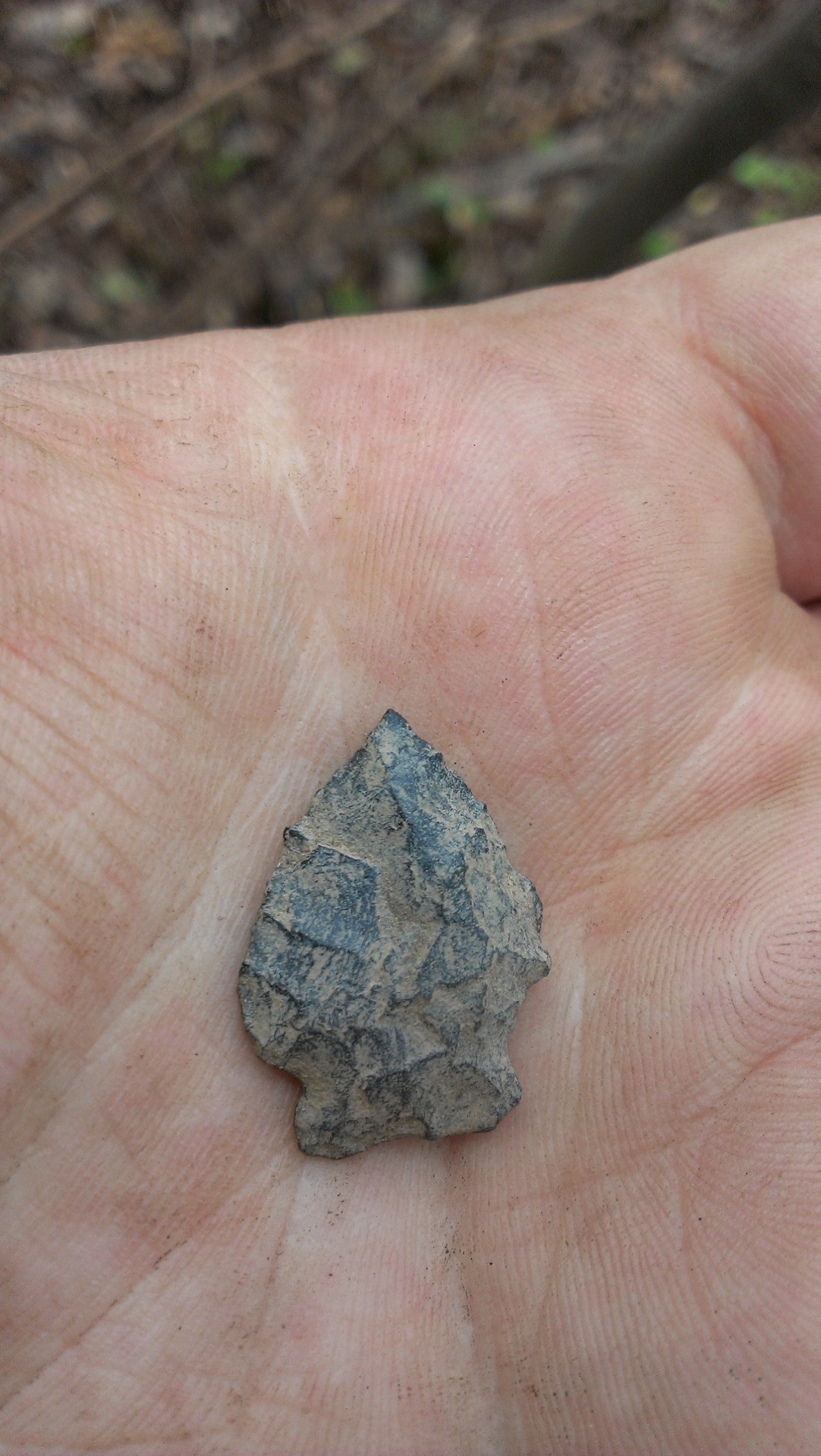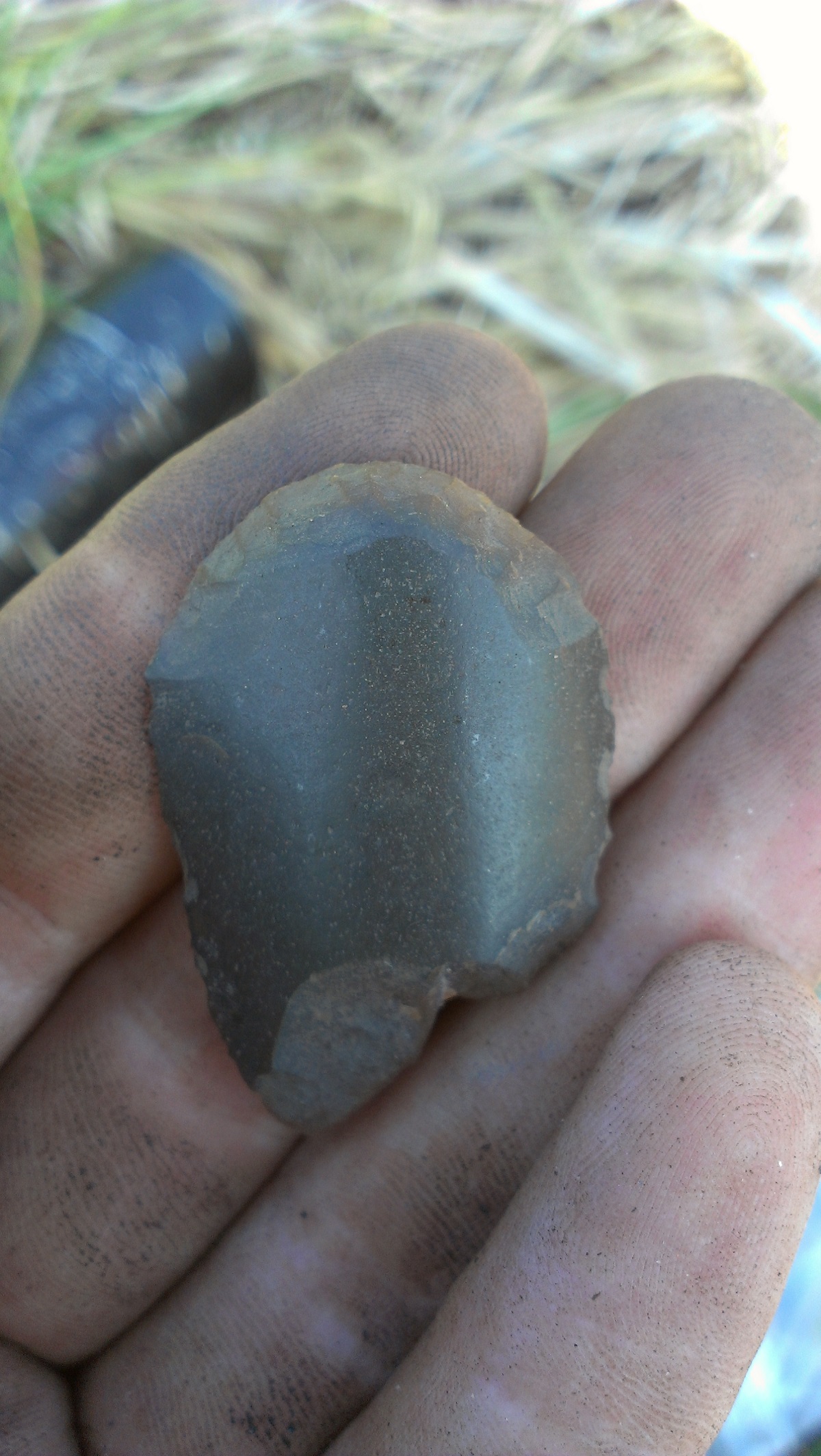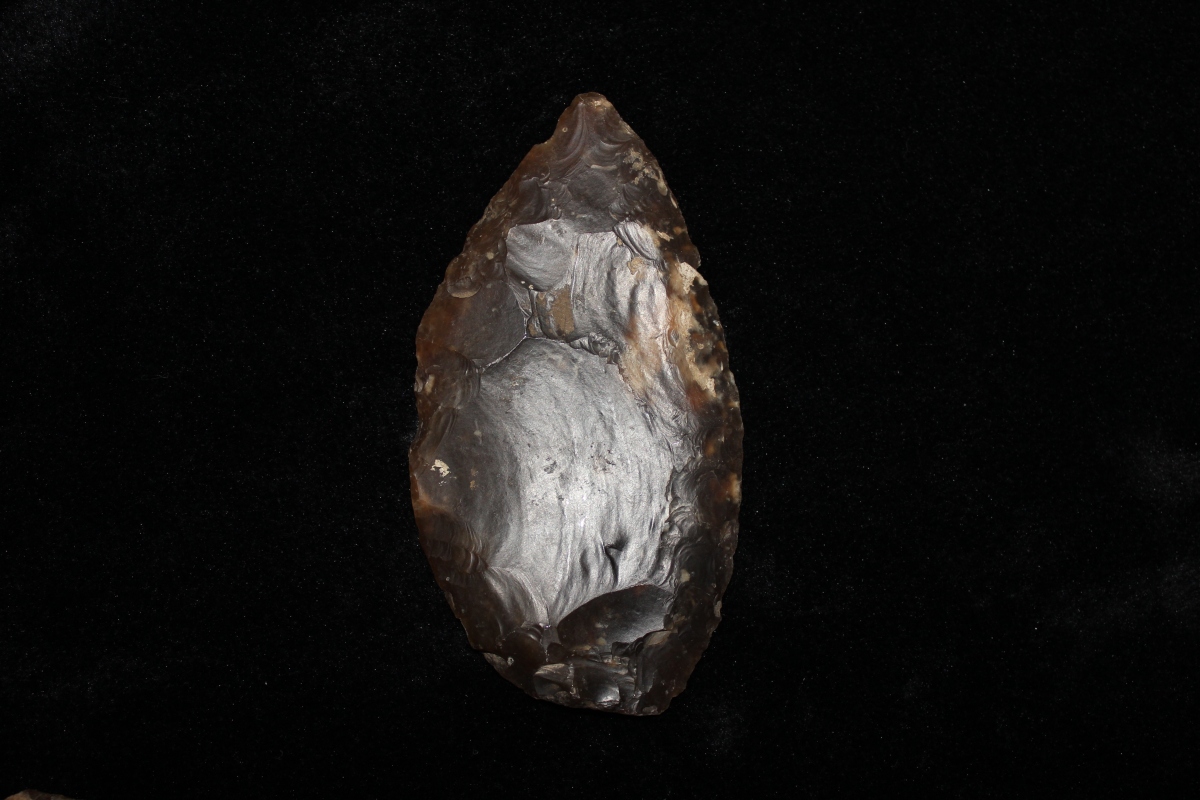The Brazeau Reservoir Archaeological Survey is a project hosted by the Strathcona Archaeological Society, and is sponsored by Tree Time Services. It currently is centred around a large campsite and workshop on the upper valley margin at the confluence of the Brazeau and Elk Rivers, located near Drayton Valley and Rocky Mountain House.
The main site, FfPv-1, was found in 2009 by Sandy and Tom Erikson while out on a day hike. They contacted the Royal Alberta Museum to report their finds, and the site was visited by curators Jack Brink and Bob Dawe in 2013. They conducted an exploratory survey with Sandy and Tom, and found five additional sites, FfPv-2 to 6. These sites are all located around the edge of the upper water lines of the Brazeau Reservoir, and are covered by water for most of the year.
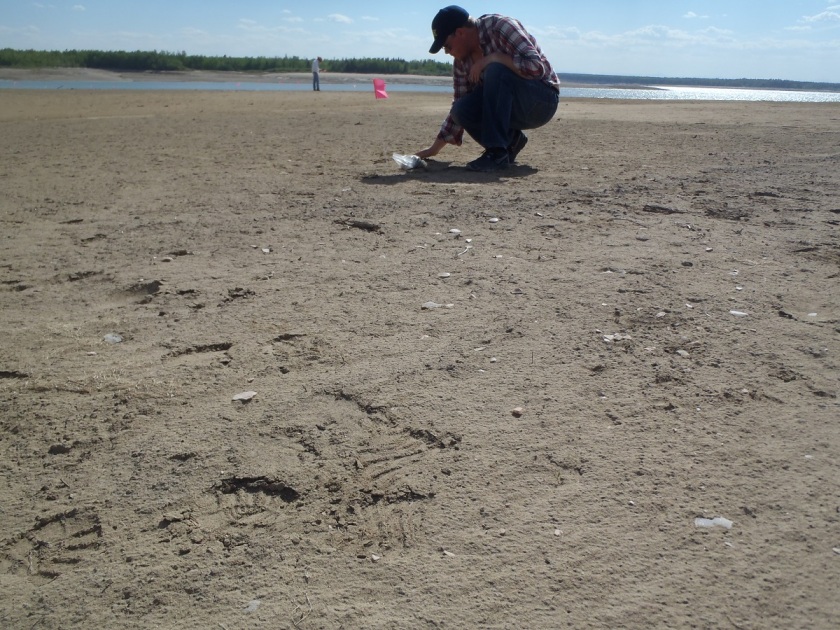
Jack and Bob brought these sites to the attention of the Strathcona Archaeological Society as an opportunity to engage with the society’s members through the practice of archaeology. What made these sites perfect to use for a volunteer project is that all the sites were identified by the artifacts found on the surface, thanks to the reservoir water that slowly stripped the soil away. This meant that volunteers could learn how to spot the artifacts sitting on the surface.
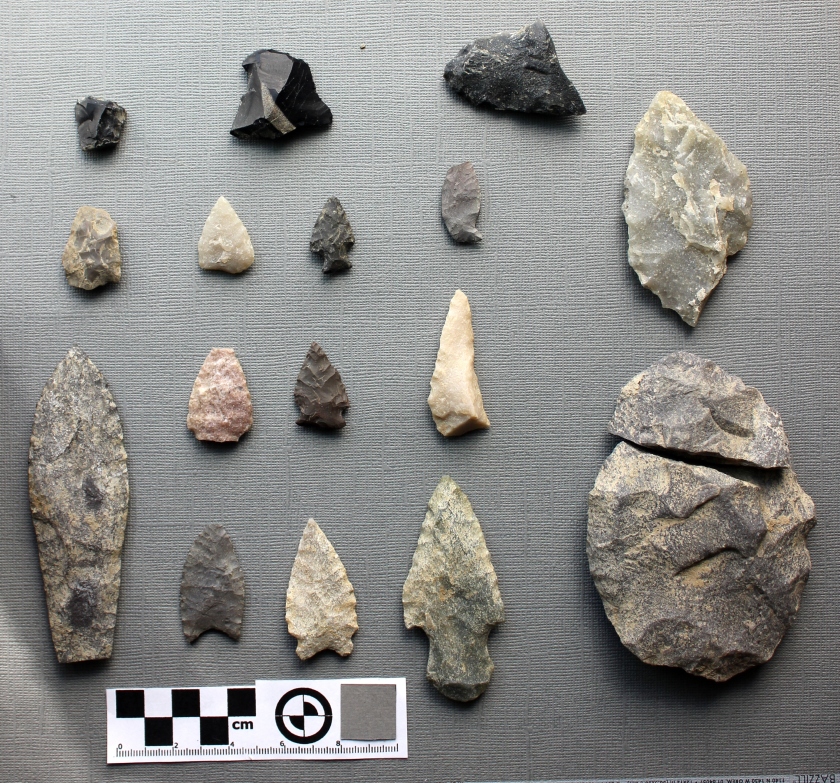
In 2015, Madeline Coleman, one of our Permit Archaeologists, co-organized the pilot volunteer project with another SAS member, Amandah van Merlin. Volunteers travelled across FfPv-1 to figure out the site’s extent, and what type of site it was. Survey of the landforms around FfPv-1 found three new sites!! Volunteers also found projectile points that crossed almost the entire expanse of Alberta Precontact history. The cultural phases represented include Clovis, Agate Basin, Hell Gap, Oxbow, and Plains Corner-notch.
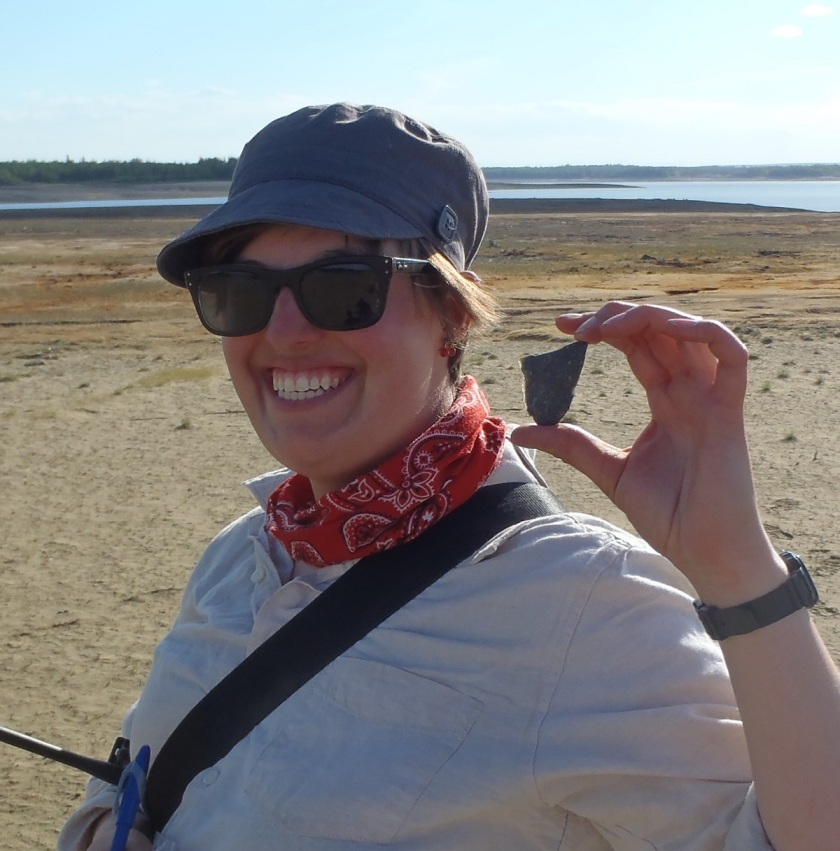
Based on the location of the sites, it is very likely that the sites are located around the whole reservoir! The construction of the reservoir began in 1910, long before developments in Alberta were examined for impacts to archaeological resources. Currently, many of the sites recently identified are only accessible by boat.
A new survey with test excavation units are planned for May 28th and 29th. To register or for more information, email Madeline at mcoleman@treetime.ca

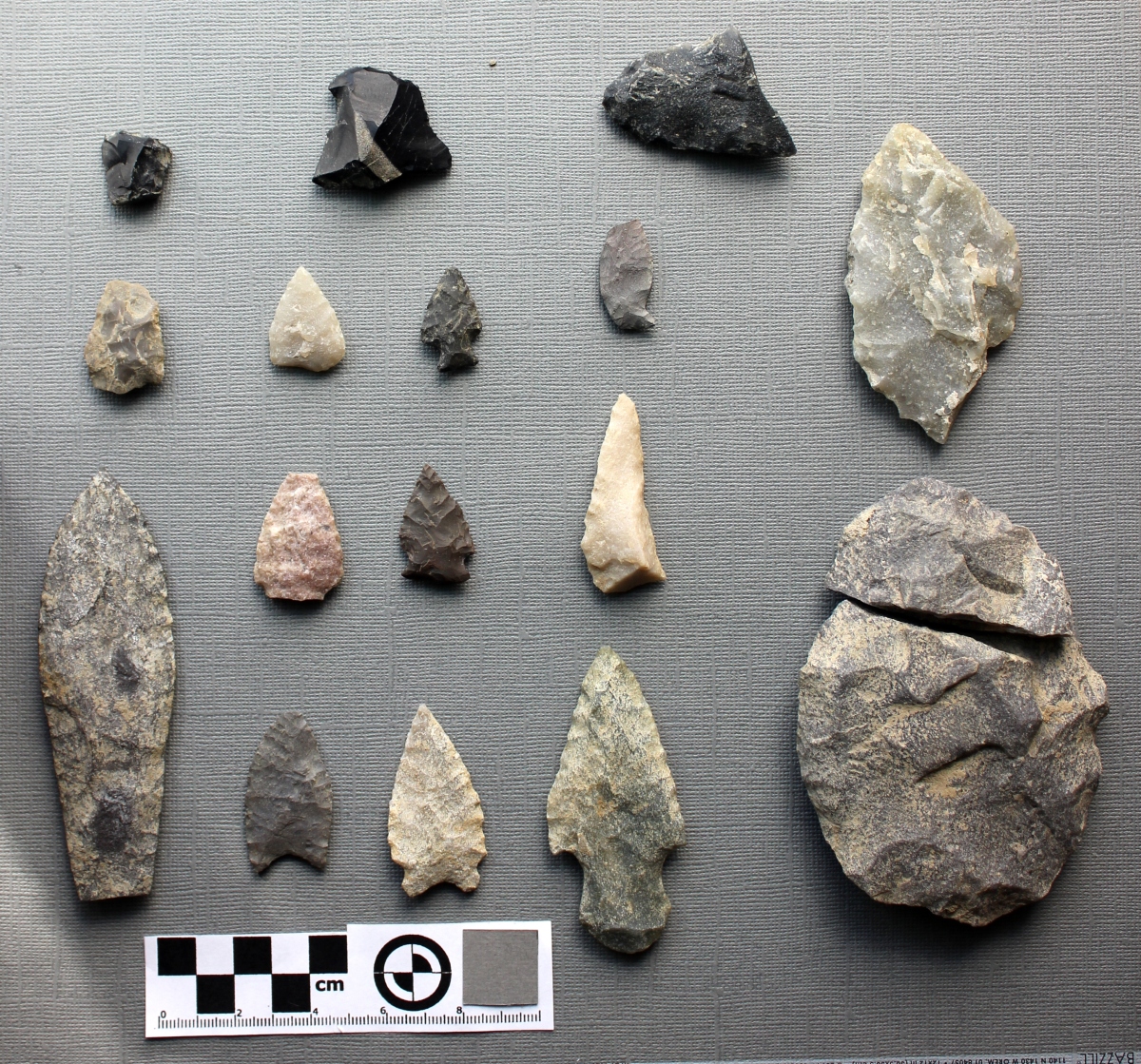
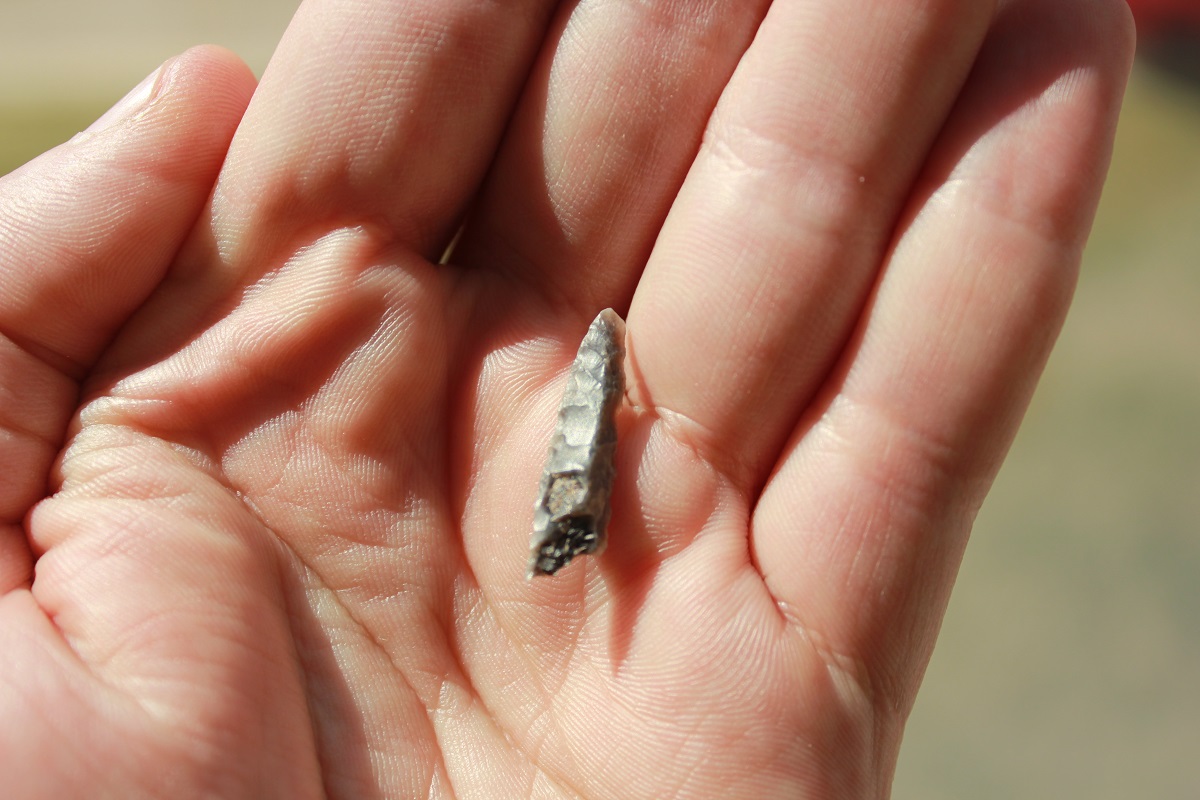
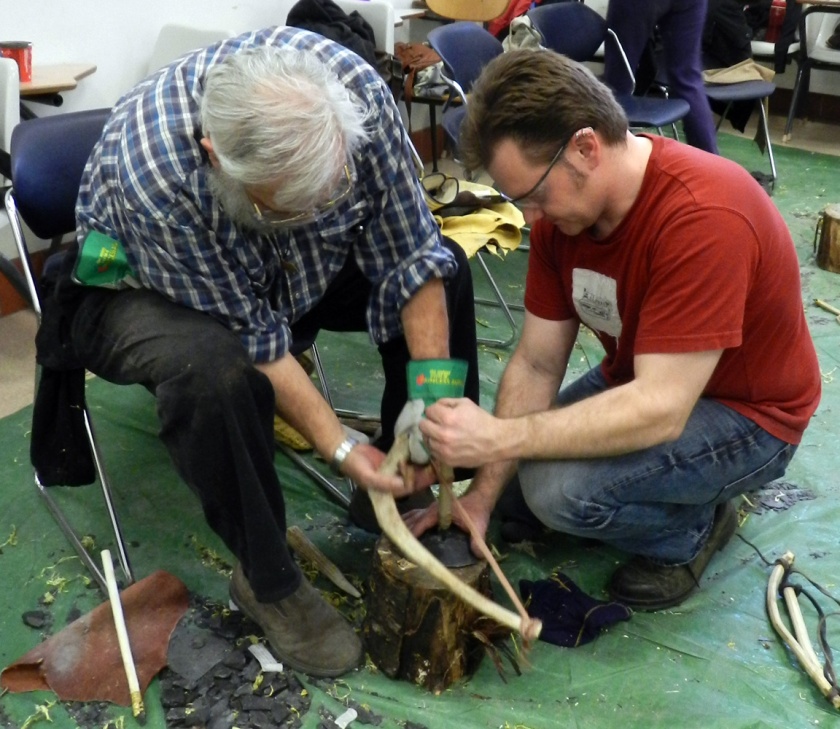
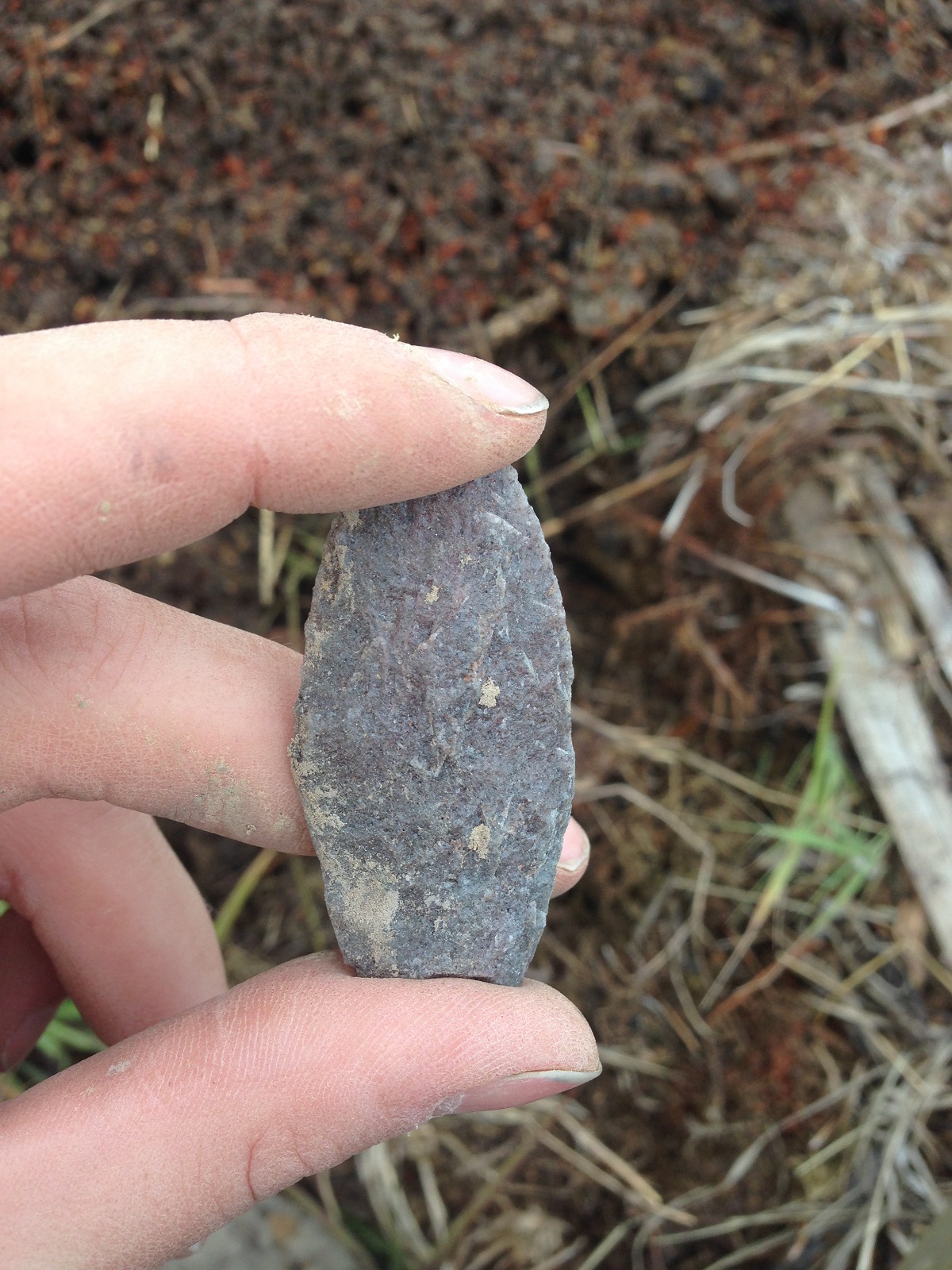
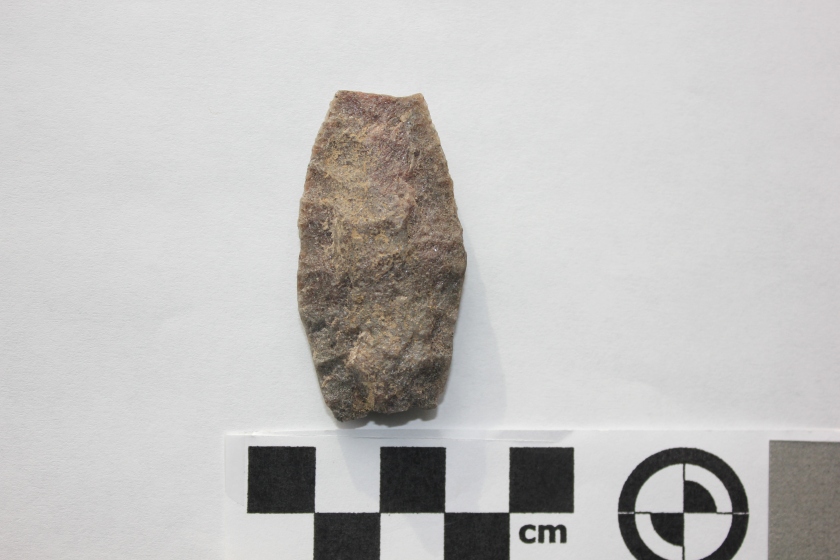 The site was identified when we were surveying a disturbed area. Like Corey explained in
The site was identified when we were surveying a disturbed area. Like Corey explained in 